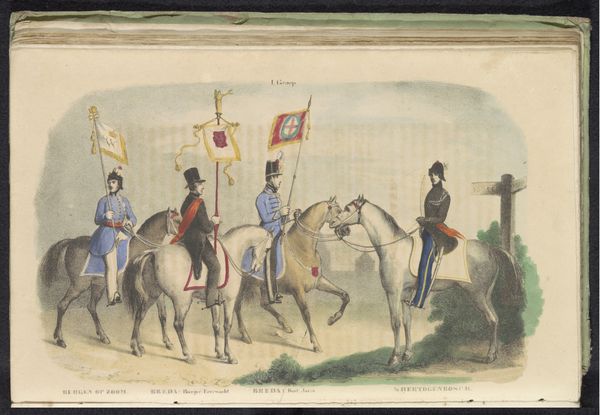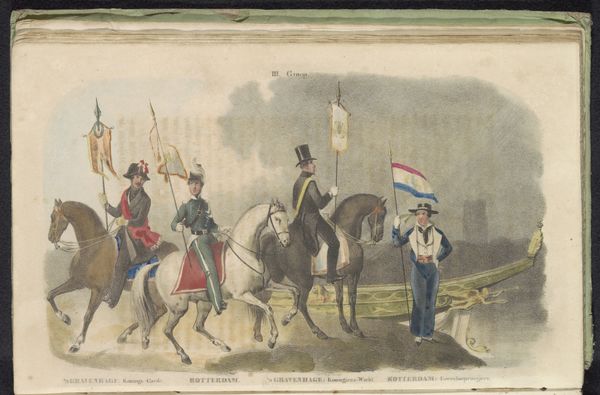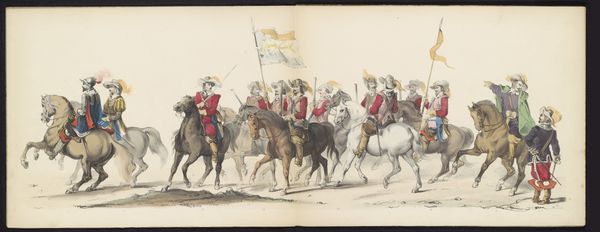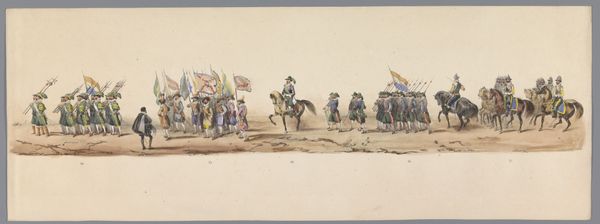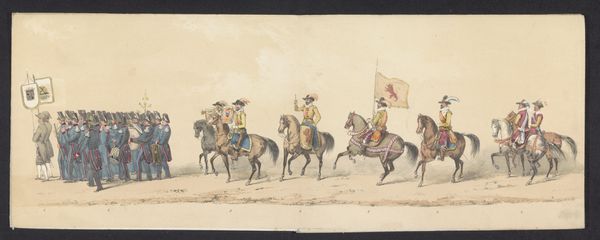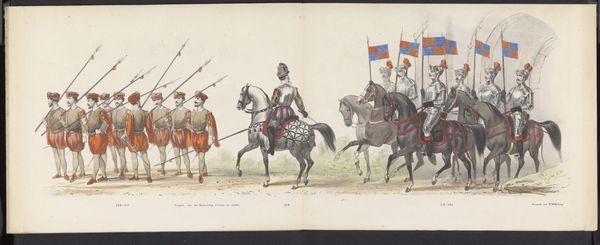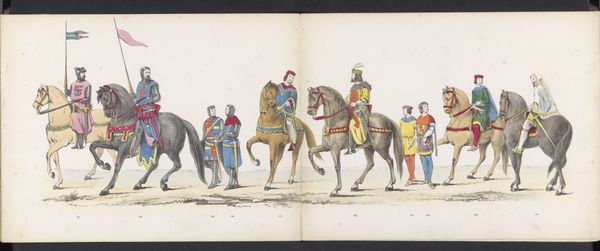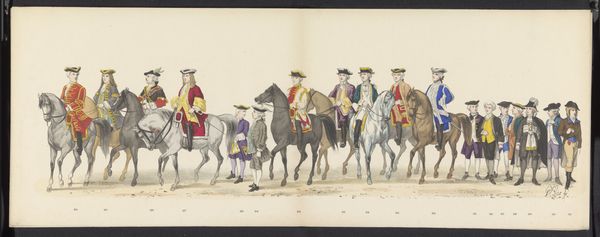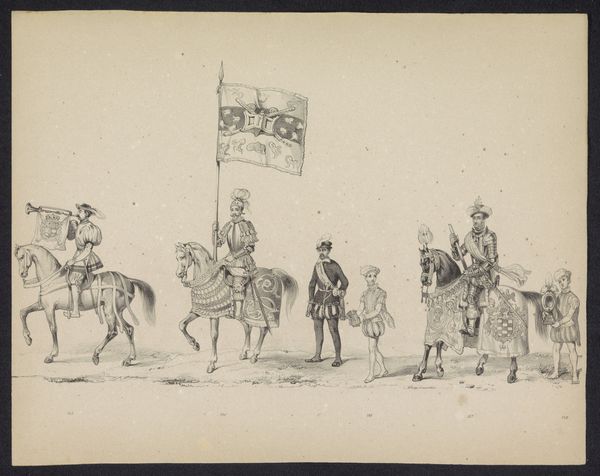
Kostumen en vaandels van de erewachten van Amsterdam, Delft en Leiden, 1840-1842 1840 - 1842
0:00
0:00
drawing, coloured-pencil, watercolor
#
portrait
#
drawing
#
coloured-pencil
#
water colours
#
watercolor
#
coloured pencil
#
genre-painting
#
academic-art
#
mixed media
Dimensions: height 144 mm, width 235 mm
Copyright: Rijks Museum: Open Domain
Editor: Here we have "Kostumen en vaandels van de erewachten van Amsterdam, Delft en Leiden", made between 1840 and 1842 by an anonymous artist. It’s a mixed media piece including watercolor and colored pencil depicting men on horseback carrying flags and dressed in elaborate costumes. It seems to capture a moment of civic pride, maybe even nationalism. What do you see in it? Curator: The depiction of these honor guards offers a fascinating snapshot of Dutch civic identity in the 1840s. Look closely – these aren’t military uniforms in the strictest sense, but rather elaborate costumes worn by citizens during ceremonial occasions. Consider the political climate: The Netherlands had only recently emerged as a kingdom after French occupation. These displays served to consolidate national sentiment, constructing a shared visual language of belonging. Editor: So the art isn't necessarily trying to capture "reality," but promote certain ideologies or goals? Curator: Precisely. The artwork isn't just a portrait; it's a carefully constructed image intended to project power and unity. Who was this image intended for, do you think? And where would it have been displayed? Was it widely accessible, or limited to a specific social circle? Understanding the intended audience helps decode its socio-political function. Note also how the cities represented – Amsterdam, Delft, Leiden – are all historically significant centers of trade and culture. The selection is deliberate, reinforcing a narrative of national heritage. Editor: I never considered that these could be strategic choices rather than a neutral recording. I am also wondering if this image played any part in further solidifying nationalism. Curator: That's a crucial question. Consider how visual representations like these could shape collective memory and reinforce dominant narratives about Dutch history and identity. Perhaps these images became historical documents by their rendering, giving further support to their intended messages. Editor: So much more going on than just men on horses. Thanks for showing me the cultural undercurrents.
Comments
No comments
Be the first to comment and join the conversation on the ultimate creative platform.
